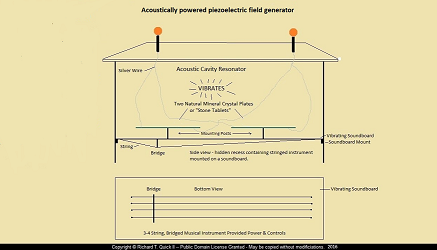Unified Field Mathematics

Tesla Fluid Model
The video title below is available on YouTube, it is restricted and can only be watched on YouTube, linking and external viewers are blocked:
Cymatics full documentary (part 1 of 4). Bringing matter to life with sound
This is definitely worth watching as an introduction to fractals and cymatics which are discussed on this page.
Contents
Going around in circles
1 + 1 = ?
The Ellipse: Non-Circular Insanity
Relativity
Angular Displacement
Frames
Frame0 - Perfect Vacuum
Frame1 - Linear Function
Frame2 - Rotational Function
Frame3 - Cymatic Function
The Big Bang
Vapor Phase - Rapid Expansion
Mass Inversion
Gravity
Nikola Tesla Patent ed Atomic Geometry
Missing Mass?
Alfvén and Parker
EMHD Physics
Going around in circles

https://commons.wikimedia.org/w/index.php?curid=25339464
Our math is flawed.
Looking at the available mathematical tools, compared to the physics that I see, set me to looking for a new framework to understand our Universe. There are logical flaws in our most developed mathematical tools which results in flawed solutions. Our math models are close, but they are just not exactly right.
A good example here is the circle... Circular mathematics were invented by Euclid, and this math has been used continously in engineering from that point, to this very day, more than 2000 years. But it is important to understand that the circle is illogical, and that pi "π" is an irrational number. In order to calculate with π in mathematics the value has to be rounded off. Calculating the true value of π is impossible, because the calculation never stops producing an output, the actual number is infinately long. The only way to apply this number practically is to determine in advance how much error is acceptable, which tells you how many significant digits to carry out the calculation to, and stop at the point. The last digit of π to be used in calculations gets a slight adjustment (rounding) to represent the remaining infinite digits which are not calculated for.
My logic, and my eyes, have both convinced me that a perfect circle exists nowhere in our Universe. Yet for engineering purposes, say for producing a crankshaft bearing, circular math is the tool most suited for design. The inaccuracy of the math does not compromise the engineering of the bearing because the inaccuracy of the materials and tools used for machining is greater than the inaccuracy of the math. The machining process introduces errors that deviate from perfection, and indeed, even the physical structure of the alloy from which the bearing is produced is imperfect. If you looked at it with an electron microscope you would see flaws: pits, peaks, and other irregularities in the structure of the material, and even with the best quality casting and machining tools, as you remove material to produce a perfect circle, imperfections that were hidden in the subsurface are are simply exposed as part of the new surface. The material itself is imperfect. So while my eyes, and my logic, both tell me that circular mathematics are not exactly correct; for designing a crankshaft bearing, it is simple, practical, and all but perfect for the application. Imperfections such as these are practically resolved in engineering with the use of lubricants. Without the lubricant the friction caused by surface imperfections coming in contact would wear away these bearing surfaces very rapidly as the crankshaft turns. This wear soon causes the surface imperfections to exceed the design tolerances and the bearing fails in short order.
So you have to be very aware of the mental trap here. We use circular math because it is all but perfect for engineering purposes, and we see circles every day... Wheels, shafts, containers; all of them circular and all of them performing the duties for which they were designed, and they look perfectly round, the circles are closed, and our eyes do not register the inaccuracies... In our minds, circles are real... But this is a mental illusion, that results partly from optical illusion, and partly from mathematical illusion. We use circles, we apply the math; but in reality, they do not exist in perfection. All of the answers resulting from circular mathematics are rounded off, just like the math used to solve the problems.
1 + 1 = ?
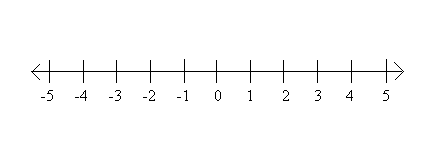
Even basic math functions, like 1 + 1 = 2, either do not work, or do not work well, in precise mathematics. Let us say you have two marbles. The first marble has flaws in specific locations. The second marble has flaws in different locations. Plus, both marbles are unable to occupy the same space, at the same time. So for me, the number 2 is essentially irrational, unless you are rounding off differences that make those individual objects unique. If you round off uniqueness when you enter or calculate data, your output from your math loses resolution, your answers are not very accurate, and in some mathematical problems your answers can be wildly off.
The ellipse: Non-Circular Insanity

Calculus was invented by Sir Issac Newton. The purpose of calculus is to determine "the area under the curve" which is shown in red in the math problem diagram lower down the page. Newton invented calculus in order that humans could predict the locations of the planets, but the math was instantly applied to practical engineering problems involving the ellipse, shown above.
Like the circular mathematics that calculus was derived from, it's a very good engineering tool, you can't design things like cam shafts without it. But like circular mathematics, it has built in logical flaws that produce flawed ouput data when applied to complex calculations... Like unified field physics. Newton knew it was not rational, he knew logically there was something wrong with it... After he developed calculus he went off into pretty bizarre numerology trying to find his way out of the logical problem he had created with his solution for planetary orbits, and by extension, the ellipse.
It would be logical for me to back up a bit and explain what the problem was, so you can understand how important a logical mathematical framework is:
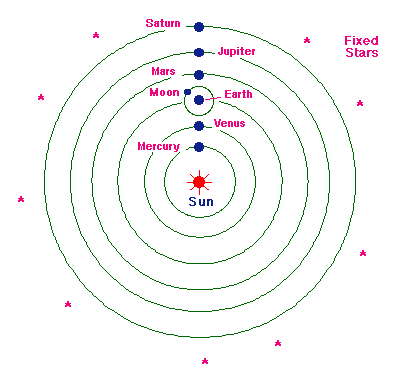
By Newton's day it was well accepted that the sun was the center of the solar system, and that the planets orbited around it. But the best available applied mathematics at the time were trigonometry and the circular functions based on π that were worked out by Euclid. Their understanding of the math dictated their model of the known Universe. Their solar system model had the planets orbiting in perfect circles. This was the direct result of their math tools, the mathematical framework they used to set up and solve their engineering problems: but by Newton's day they had decent telescopes, and they were able to fairly accurately plot orbital positions from observed data. It was very clear to astronomers that the planets did not orbit in perfect circles. They were able to plot the location of any observed planet at the time of observation, but they were unable to predict mathematically where the planet would be located, say, 6 months into the future.
So Newton looked at the observed orbital positions, plotted them out, and could see the rough shape of an ellipse. So he took the circular mathematics described by Euclid, and developed it into calculus, which solves for the area underneath under any sliced section of the ellipse.
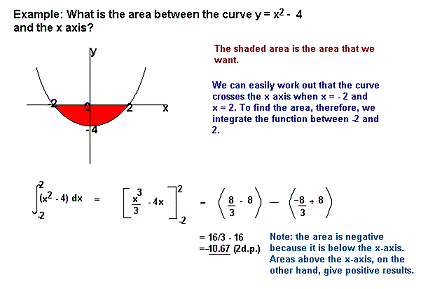
The math problem is set up with two lines; one curved line terminated at each end with a straight connecting line, and calculus solves for the area enclosed by these two lines, shaded red in the figure above.
It was measured that the area under the curve was equal for the same amount of orbital time. Then the astronomers were able to calculate, and to predict, the future positions of the planets. They could calculate where Jupiter was supposed to be, say six months into the future, and then six months later they verified by observation that Jupiter was actually in the spot that their math had predicted. This had been a long standing problem, and all the astronomers cheered. Newton was the hero of the day, and the problem was solved!
And then Newton went insane; the numerology got pretty bizarre.
But the astronomers were happy, until they got better clocks. With better time measurements, they discovered that the planets were not where they were supposed to be. They were close, but not precise. The problem remained unresolved until Einstein published relativity math.
Relativity
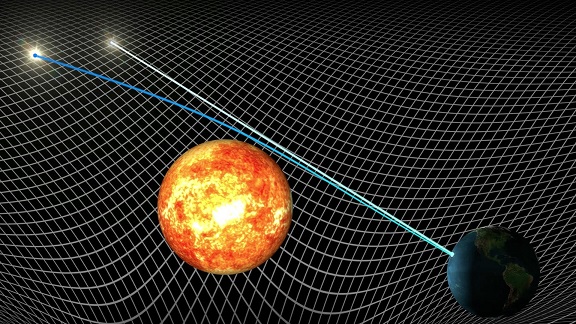
1) People may say I am a heretic, but Relativity math is unstable, it only works over a very narrow range or field of numbers.
2) Einstein did not curve space, Newton did. Calculus ASSUMES a curve, and eventually... It produces one.
3) I believe that Newton would have solved for much of, if not all, of the Unified Field if he had better measurements, and more data. He would have used a different mathematical framework.
It appears to me that Einstein's published math applies a correction factor to calculus, it appears to me that relativity math was developed from measured data for the purpose of correcting orbital position predictions. It works. Within the very narrow range or field of numbers that relativity math works within, it works very precisely.
After Relativity math was first published by Einstein, it was proven wrong by the astronomer Hubble. Relativity math when first published predicted a static state Universe, measurements taken by Hubble proved the Universe was expanding. Einstein attacked Hubble professionally, but astronomers around the world verified Hubble's measurements and Einstein was forced to back down. Einstein came back a few months later with a "Universal Constant", a correction to Relativity math to make it agree with the measurements.
It is my clear understanding, after examining these issues, that curved space was dictated by poor mathematics... I can point to the precise problem: a logic failure directly related to the function of π. Circles and curves don't exist, and you cannot solve accurately for real world physics problems using mathematical frameworks that are fundamentally irrational. I actually resolve this down to a moral position, a simple choice of right or wrong, correct or incorrect. This math I am discussing, it's all wrong. It is incorrect.
Yet we use it all the time in physics, and we get close answers, but they are never precise, or we get precise answers but only over a very narrow numerical field. Relativity math only works in large scale space, it is completely incompatable with things like quantum mechanics, vector mathematics, hydrodynamics, fractal mathematics, and cymatic math. Quantum mechanics, vector analysis, hydrodynamics, fractal mathematics and cymatic math are all closely related, so closely related that it is all the same math really; but Relativity math and calculus are either not very compatable with, or they are completely incompatable with these other studies.
We use advanced mathematics to calculate or produce a "picture" or "image" of the subject being studied and calculated. This image or picture that cumulative math answers resolve, absolutely reflects the mathematical framework that was used to process the data. I see that the math used to calculate orbital mechanical functions introduced the curvatures that just do not exist in our Universe. I am not denying relativistic effects, Tesla patented relativity functions in the lag motor: I am saying that the math we use to calculate those effects, while producing accurate output, are giving us the wrong understanding of our time-space geometry. Tesla's exploitation of magnetic lag and angular displacement functions in rotational systems, combined with his cymatic research, lead to a different mathematical framework.
Angular Displacement
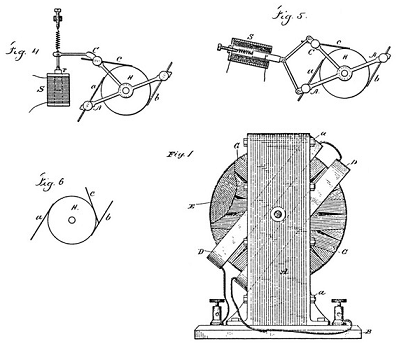
I know for a fact that space is displaced by an angle; gravity refracts light. You see it all the time, put a pencil in a glass of water: the light is refracting. Gravity refracts light too; the more gravity, the greater the angle of refraction. This angular displacement affects the orbits of the planets. This function can be accurately calculated using math tools that don't curve space-time. The same math tools can be applied to iron motor cores and armatures operating at high-rotational speeds on high-frequency power supplies to predict the magnetic lag functions. It's the same type problem. Tesla set up and solved for this using carefully constructed data sets developed from physical measurements. He changed the variables and measured everything again, and he repeated the process until he understood the function well enough from observation, measurement, and calculation that he was able to file patents on magnetic lag as a principal of operation in producing rotation in a motor armature.
What I am saying is that there is different math, that produces the same precise answers as relativity math, but it shows space as displaced by an angle, not a curve. I know this to be true, I know this as a mathematical fact. What Einstein describes as curved geometry in large scale space, my math shows to be angular displacement in Planck space geometry (see: https://en.wikipedia.org/wiki/Planck_units); very very tiny space, in fact, the smallest physical space that can be measured. In a gravitational field these tiny spaces are displaced by an angle, and adding up all of these very very tiny angles of displacement over a long distance in large scale space produces the illusion of curvature. We are going to talk about this at length as we go along, because Tesla documented everything from angular displacement regulators, to angular displacement motor, to angular displacement communications receivers in his patent portfolio. Other patents such as the Coil for Electromagnets, and Tesla transmitter geometries, exploit angular displacement functions in the windings. These functions are mathematically logical with inputs and outputs, there is no π, and the circle never closes because of the passage of time. The output functions plot as spirals, and this math was first introduced by Archimedes. When Archimedes solved for spiral mathematics it directly led to a technological leap forward in applications ranging from the screw pump for irrigation, to the cork screw to open wine bottles.
Our math is very good engineering math; you can design cam lobes with calculus and get excellent cam shafts; they are not perfect, but they will run fine with lubricant. You need relativity math to hit precise targets on space missions. Certainly relativistic effects are real, but the math we use to predict relativity functions, while it works, does not accurately reflect the actual Universe... The Universe is non-symmetrical, non-classical, and loaded with fractal and quantum mechanical functions which conflict with the mathematical framework of smooth surfaces and curved space. I am confident that Newton knew his solution was wrong, it's glaringly irrational. If there had been better clocks in Newton's day....
This video demonstrates how cymatic excitement can change the refractive index of a fluid, causing light waves to refract at different angles.
Frames

So lets design or create a mathematical frame that does not introduce errors, like circles or curves, which are producing assumptions, like curvature. And we want to avoid the logical and rounding errors inherent to things like π, and 1 + 1 = ?.
Are you ready to be the next Einstein?
Then let's create the mathematical frame to enter our data into and perform our calculations. It's also a supercomputer. You can use a flat or relatively flat, blank, empty, screen... Like a chalkboard, or a computer screen, with a frame or border around it. That's your brand new supercomputer, it is two-dimensional, and so far it has nothing entered into it.
In the next step, we need to deliberately add a dimension, to better represent the real world around us, and to permit calculations on objects, three-dimensional physical objects; so in your mind (or for real), this frame we have created now has depth, as if it were a box, and our mathematical frame is now calculating three dimensions, which we know is rational in our real universe.
Frame0

Perfect Vacuum
Inside our frame, there is no motion, no energy, no objects, no gravity... If you were to put something like a marble inside the box, it would float there without any outside forces acting on it. This is a good mathematical framework for an empty vacuum space. I don't see any logical errors, or irrational functions, and we are not assuming anything but a volume of empty space, pure vacuum. It is possible that empty space is just a concept, an assumption, and that it does not exist in reality, but we are going to start here mathematically, because once we introduce data, the frame will no longer be empty, and so even if there is no such thing as empty space, the error cancels out. Since we intend to load data, we can assume emptiness as a starting condition.
Now, we want to set up a problem to solve, and this means putting something, data, into our supercomputer mathematical framework. This means that errors are introduced. First, we are assuming a pure condition, a perfect vacuum space where no particle, no magnetic field, no energy, no gravity, even time does not exist there. With nothing there to measure the passage of time, and nothing there to be affected by it... There is no time. The mathematics we are using are so precise that we can't do anything without changing this entire condition, and once this condition changes, it's not perfect anymore, nothing is. So we have to assume mistakes, errors, imperfections, and we know ahead of time we will make them, we are going to screw up the data we load, just by looking at it. So starting out, we know, nothing is perfect, and it never will be once we violate our concept of a perfect vacuum.
So we have to stop and think, how can we enter data, while introducing the least amount of data corruption, and the way to do that is to introduce another assumption... In science we call this a theory, or a working assumption... And what we are going to assume is a process. Real data was introduced into our Universe, we know it is here, and we can see back and measure with instruments, and calculate even further back, to some type of process, or event, that introduced data into our Universe. We don't know exactly what this process or event was, so we have to assume something to enter data. In the real Universe there are several plausable processes or event types that may have introduced data. You can say it was a reproduction event, a bubble was produced by unknown tension sources in a pure vacuum, God poked open a hole in empty space, membranes colliding...

We know there is error, we have to make an assumption, and an easy way to do this is to imagine, or assume, that a man somewhere with equipment is able to load data into our supercomputer. I doubt that is what actually happened, to me it looks more like a reproduction event, but you can assume anything you want, and later we can subtract the assumption, with associated errors, and get a pretty clean mathematical model. So we have a man with a work area, and equipment, and he is going to introduce the data into our mathematical frame, and he is going to make errors, but he's a professional and the mistakes will be few, and minor.
Frame1
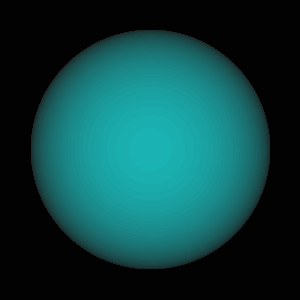
Linear Function
The first thing the man is going to do is pick up a hose and introduce some fluid into the frame. There is no gravity, and the man introduces the fluid by turning on a pump and pumping out a given volume of the fluid. The hose is retracted, and the free floating body of fluid pulls itself together into a near perfect sphere and it floats there, nearly motionless.
Next, we have to assign some properties... The properties that I see are mass, volume, temperature, viscosity, and surface tension that is holding the body of fluid together into a near perfect sphere. Surface tension here, acts like a force, trying to pull the fluid body into a perfect sphere. The fluid is resisting this surface tension and does not compress, in fact, it is pushing outwards, and it wants to escape and change into a vapor by either evaporation, or boiling off. But the surface tension is preventing a change of state, and there is no leakage of fluid. All of the forces that I see being represented, are linear, straight lines. This fluid we are using is pure energy, E=M times a constant c2, and this function is completely linear, it is a straight line. This straight line function best represents Einsteins mathematical framework; all of Einstein's thought experiments are linear functions as well, performed on straight lines. So M, the Mass of fluid that wants to escape the surface tension is linear force. The E, Energy, wants to flow out in straight lines away from the center of mass, and the surface tension is pulling in straight lines towards the center of mass. These forces cancel each other out... There is little motion, and the surface of the fluid is very, very smooth. This mathematical smoothness is much closer to perfection than any smooth surface we can observe or measure in the Universe today, but it's not perfectly smooth. Even if it were perfectly smooth, the act of measuring the surface would cause disturbances and it would no longer be smooth at all. Even shining a light on it causes changes that affect the surface geometry and introduces propagating errors into the calculations. Smooth... Not perfectly smooth, but almost.
At this point we want to save our work, and give the saved state a name. Let's call this mathematical state Frame1, and since we have a supercomputer we can call up a copy of this saved state anytime we want and perform calculations starting here and moving forward in time: Because there are more than one possible process paths from this point going forward, and we will have to return to this moment to begin calculations and gather data from each path examined... Some paths may not even be logical from this point moving fowards in time, but performing calculations on these illogical paths returns data that is useful for things like interpolations, or solving for congruencies. We want to calculate all the logical paths and at least 2-3 illogical paths to develop robust data sets, but for the example here I am only going to cover 2 logical path calculations and just introduce the idea of illogical paths and the reason why they should be explored in advanced mathematical studies.
Frame2
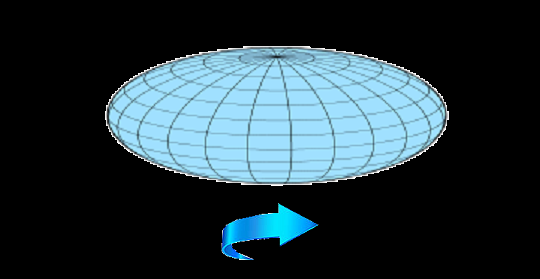
Rotational Function
Moving forward from Frame1, the first logical path that should be developed and calculated are the rotational functions. In order to this we have to introduce spin, we want to rotate the body of fluid. Everything in our Universe is spinning, everything. And to account for this universal rotation, one of the most logical places to add the rotational function is at, or near, this point. One of the big reasons is because it makes the calculations simpler, and reduces the opportunities for errors. So we are going to instruct the man with his equipment to get the body of fluid spinning. He take a paddle, like a propeller, attached to a magnet and puts it in the center of the body of fluid, and then turns the paddle with a rotating magnetic field. A simple magnetic stirrer, he adds energy to the body of fluid with it, and it spins up to an arbitrary rotational velocity. He removes the paddle with the magnet, and this guy is pretty good, there is little disturbance caused by his placing and removing the paddle, as most of the motion cancels out. But the surface of the fluid is inevitably disturbed some, and indeed, the math actually appears to reveal that the process of calculation is introducing some error in the form of disturbances which show up as tiny surface flaws. Either the most precise mathematics are imperfect, or the act of calculation somehow affects the model physically, and I think both are possiblities, even possibly acting together in some way. In my math, these appear to be related, quantum mechanical functions. In the same way that an observer affects the object in the frame by taking a measurement, the observer also affects the object in the frame by calculating it, even without a direct measurement. I won't swear to this, but it appears to be true mathematically in this frame when I perform operations, even without observations and measurements. It appears logical that the observer affects the environment not only by being there physically, or taking a physical measurement... Thinking about it is enough to change the data. These changes are extremely tiny, but my analysis indicates the changes are in fact there.
So we have calculated some roughness onto the very smooth surface, but the shape of the body of fluid is no longer close to spherical. Centrifugal force has distorted the shape, and the rotation has produced an axis and an equator. The body of fluid has flattened along it's axis, and it is bulging along the equator. We can define this geometry as an imperfect, rotational oblate spheriod with a moderately smooth (or slightly rough) surface. We are going to save this state and call it Frame2
Frame2 is a very interesting and complex physics model with infinte pathways and assumptions possible moving forwards from this point in time/space. The structure and surface geometry are highly congruent with the structure and surface geometry of the natural Earth. This is the mathematical model that I use to set up and calculate basic relativity and orbital mechanics problems. You can make the assumption that the fluid is transparent, or nearly so, because we should have learned by now, nothing is perfect.. So you can make the fluid nearly perfectly transparent, shine a beam of light through it, and the rotation of the fluid displaces the light at an angle, which varies with the speed that the fluid is moving and it's viscosity, and the fluid is moving at different speeds depending on the location inside the object. There is also turbulence; the rough condition on the surface indicates there is motion of the fluid below the surface. This energy is all trapped, and stored, in Frame2. The stored rotational force keeps the geometry spinning, and the stored turbulence keeps the surface rough.
Frame3
Cymatic Function
Frame1 is a static linear model. There is little internal motion or turbulence, and all of the force functions are straight lines. Frame2 represents a rotational dynamic model. In Frame2 the linear and rotational functions are combined, which results in our spinning, semi-perfect oblate sphereoid with a slightly rough surface. In order to simplify the calculations here, I am going to choose Frame1 as the starting point for the next step. Logically, either Frame1 or Frame2 can be used, but the static linear model make understanding cymatic excitation a little easier, and the calculations are simpler and easier to follow along.
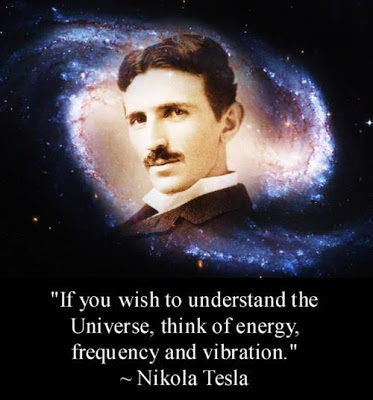
The linear function, Frame1, is energy. The rotational function, Frame2, is frequency. The cymatic function, Frame3, is vibrational. Unlike linear force or rotational force, cymatic force reciprocates, back and forth. We know this force from music studies, acoustic sound waves are reciprocating energy waves, and this type energy not only delivers force, it also contains complex geometrical information. It is a modulating signal in a sense, and in Frame2 studies the rotational fluid body is the carrier sine wave, just like radio physics, but there is no radiation from this system... This system stores both energy, and information.
What we want to do now, starting with Frame1, is to have the man with his equipment add acoustic wave forms to the geometry. The man has a tone generator and a probe transducer, instead of the flat plate shown in the video. When he pushes a button to generatate a tone, the tip of the probe transducer vibrates at the frequency of the tone produced. He places the tip of the probe in contact with the surface of Frame1 and pushes the button to generate the tone. The vibrations from the probe excite the fluid, and stable geometry, standing waves, are produced on the surface. These standing waves extend all the way through the fluid mass, but we can only observe and calculate them easily on the surface
The instant the acoustic wave forms are introduced into the surface of Frame1, the fluid body convulses as the energy penetrates through the geometry, there is a flux as acoustic energy organizes patterns in the formerly stable state, and the body of fluid becomes animated with motion. The mathematical solutions that are calculated as a result of this process produce geometrical forms that very closely resemble organic life forms.
There are several short YouTube videos and full length documentaries demonstrating cymatic experiments, and fractals in nature. I recommended one at the very top of the page. Cymatic equipment in the laboratory can produce the organic forms, pictured in still images, below. Videos showing "Fractals in Nature" are also very helpful in understanding the natural functions of this math.


As acoustic energy is loaded into and stored in Frame1 the surface becomes extremely rough. Spikes are raised up on the surface, pits are formed that penetrate below the surface. Acoustic energy of different frequencies and intensities results in different patterns and different dynamic effects. Using different sequences and frequencies of acoustic energy that are injected or loaded into Frame1, changing patterns are produced that are strongly congruent with the development and evolution of organic life.


My Frame1 and Frame2 studies with cymatic excitation leads me to the conclusion that our Universe is actually a living organism. It is alive, and the "life force" is cymatic; the result of a fluid body with surface tension being injected or loaded with acoustic energy that first creates stable geometry, and then animates the geometry into dynamic functions, different types of motion.
Based on this information, the assumption made to create a process, looks to be biological... A reproduction process where the cymatic information which is loaded and stored into the Frame, either one, serves as both a type of DNA which ends up describing things like our mass geometry, but also animates the matter dynamically and produces complex geometrical interactions... And we see these in biology too, not just physics. Frame1 and Frame2 studies indicate that these events share high congruencies with the production and development of an embryo
Also see: Tesla's Cymatic Research
The Big Bang

As we loaded acoustic energy into Frame1 the dynamic motion produced friction in the fluid body and the fluid heats up. Heat is a form of energy, but no energy can escape due to the surface tension, no fluid can leak out. As the amount of acoustic energy that is loaded into Frame1 is increased, temperature is increased, and the surface tension is stressed, right to the breaking point.
When the surface tension ruptures, like a balloon bursting, all the restraining force acting on the fluid body is released instantly, or very, very close to instantly, and a very rapid change of state occurs.
The mass of fluid, which was under great stress, vaporizes, or changes state from Mass to Energy very rapidly. The math indicates that the state change, or vaporization, began in the center of the fluid body and propagated outwards to the rim and tips of the spiky and pitted cymatically excited geometry. This corresponds to the "rapid expansion stage" of current Big Bang modeling using conventional, crappy and illogical, mathematics. You are already smarter than Einstein ever was.
In real state change modeling here, the cymatic excitation had to take place during, or after, the rotational functions were introduced in Frame2. And after calculating all the logical paths and 3 or so illogical paths, it looks as if the rotational functions themselves were produced cymatically. To keep the calculations simple, I have to break them down into Frame1 and Frame2 path studies. Calculating a rotatational fluid body under cymatic excitation is complex mathematics, and is the limit of the math that I can calculate in my head and explain to you in words. But you must understand that these calculations are not theoretical, this fluid body can actually be studied in an experimental cabinet on the Space Station for instance. The man could be an astronaut using simple lab equipment, and the injected fluid could be water. In this case, you can have an actual fluid body rotating while being cymatically excited with a transducer probe, and measurements can be taken from the surface of the fluid body with a low-energy laser. This way the math can be checked pretty precisely against the physical model... No theoretical mathematics were used in constructing our frame that does not cancel out by the process of loading data (theoretical vacuum space) or subtracting assumptions (God, a man with equipment, membrane collision, etc.) leaving just a real, physical model that can actually be measured, and precisely calculated.
Vapor Phase

Rapid Expansion
My Frame1 and Frame2 path studies indicate that the state change began in the center of the Framed object and the M to E conversion propagated outwards to the rim and tips of the structure. My geometry here very, very closely matches the current model for the "Rapid Expansion Phase" of the Big Bang, but compared to their model I have a crystal ball into the creation of our Universe... I can calculate the geometry conversion from the fluid state into the vapor state... The rapid expansion phase is a vapor cloud model, but the vapor contains all of the force, motion, energy, and cymatic information that was loaded into our Frame studies. This is a data cloud, packed with information and energy, all of which can be calculated with precise, non theoretical, non-curved or illogical mathematics. It's sane, it is rational, humans can understand it, and my head does not hurt. There are clean input and output functions, and you don't need correction factors.
This vapor cloud expanded very rapidly, cooled very rapidly, and it began to precipitate out particles. But something happened in the process of vaporization and condensation that forever changed the force action geometry.
Mass Inversion

Our current mass geometry resolves into a cymatically excited rotating fluid. They are crystalline, or fractal, surfaces with internal dynamic motion, and spin. In Frame2 -> Frame3 geometry, we had a large protobody: the substrate or carrier fluid was rotating about an axis, and the surface was rough, acoustically modulated, with spikes, ridges, valleys, and pits, arranged in regular patterns, and the surfaces are mathematically fuzzy due to accumulated tiny surface errors. The whole works was held together under surface tension.
What it looks like now are lots of tiny pieces of the protobody: with the surface tension at the center of the mass. I could have stopped and tried previously, in Frame1 or Frame2, to describe the surface tension in the protobody as some type of film, or membrane; but there was insufficient data to be sure. At this point however, it looks as if the protobody surface tension was a thin elastic film; similar to the thin elastic film surface of a balloon. When the surface tension failed at the Big Bang event, tiny fragments of this film were produced; like the rubber skin of a balloon shreds into tiny fragments when it is forced to explode under great pressure. These shredded pieces of film, or membrane, cannot flatten out, nor can they wad up and collapse into a point, or a smooth ball: Because cymatic energy is trapped, and stored, on it. This cymatic force action contains information that is expressed as the surface geometry of particles, even though it is acting from the center of the mass.
My math clearly shows that the universe inverted during the process of changing into a vapor and condensing back out as particles. The inversion is calculated with a Frame path study: the fluid body begins to vaporize in the center of mass... From the inside towards the outside, moving forwards in time. The entire mass existed as a vapor cloud for an instant, but the outer edges of the cloud never reach the high temperatures and pressures that formed way back in time, at the very center. So the condensation begins first on the outer edges of the cloud, and works its way back towards the center as the cloud expands and cools. We started with a single contigious fluid body under surface tension, and we ended up with a vapor cloud, precipitates, and gravity!
Gravity

Gravity solves as the function of surface tension on a primordial fluid body. It was an inherent property of the fluid mass that was pumped or injected to produce the Frame1 model. We actually see this surface tension everywhere in our Universe, but it is now acting from the center of mass, pulling down towards the surface. It's inside out, but it's still the exact same force action. Trapped on a fragment or piece of membrane, or surface tension function, in the center of mass. And trapped along with it is some of the cymatic force energy and geometrical information that was formerly expressed as spikes and pits on the surface of the fluid protobody. This force action and geometrical information is trapped in the center of mass, and is now responsible for atomic nuclei geometry and the resulting electron orbital structures.
Nikola Tesla Patented Atomic Geometry
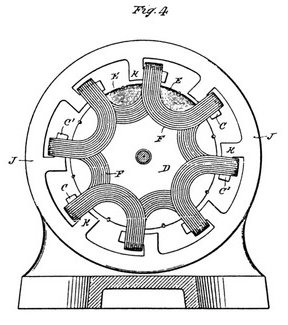
My calculations of atomic geometry using this modeling system is highly congruent with Tesla patented alternating current motor technology. Click the image above, or follow the link just provided, and you can get a better visual image of the mathematical solutions I am discussing. Tesla's systems of alternating currents consisted of two types: pure rotational currents: sine waves; but also cymatic or "pulsitory" wave forms, as he stated in his patent language. At low frequencies, sinsoidual currents are easy to produce from generators. But Tesla also patented cymatic generators which produced a frequency stable output. These were based on a reciprocating steam engine, and could produce two and four-phase, perfectly timed, cymatic or "pulsitory" currents, and these generators were used to power motors in research and development, because they were perfectly timed.
So an atom with orbiting electrons, resolves mathematically under this framing system as an acoustically excited rotational system, and operationally closely resembles a Tesla patented induction motor driven by cymatic, or pusitory waves which are perfectly timed. The rotating iron armature of the Tesla motor represents the rotataing fluid in the atomic nucleus, it is the center of mass. The cymatic information trapped in the center of mass produces force patterns which are highly congruent with the winding geometry that Tesla documents in patent over, and over, again. Some armatures have interwoven windings... And in these patented Tesla armatures all of the armature coils, are closed upon themselves. In his patented motors, Tesla closes the circle in electromagnetics.
Missing Mass?

Most of the Mass that was converted into energy during the vaporization never condensed out into particles. In dark matter studies and computer simulations it looks like transparent fluid mass.
See: https://wwwmpa.mpa-garching.mpg.de/galform/virgo/millennium/
When computer simulations of dark matter are overlaid on telescope images of visible objects the resulting system is highly congruent with human brain nervous system structure. The dark matter actually looks like connecting nerve fibers. These fibers or tubes of dark matter are manifolds. These manifolds are gigantic and extend out into deep space hundreds of times the diameter of an object, such as the galaxy shown above. These dark matter manifolds are coiled up and spinning with the rotational functions we introduced in Frame2, and as they unwind and uncoil into the open space surrounding the precipitated mass, they are releasing stored energy that is pushing the universe into expansion. Modern physics is just beginning to scratch around here..
Alfvén and Parker
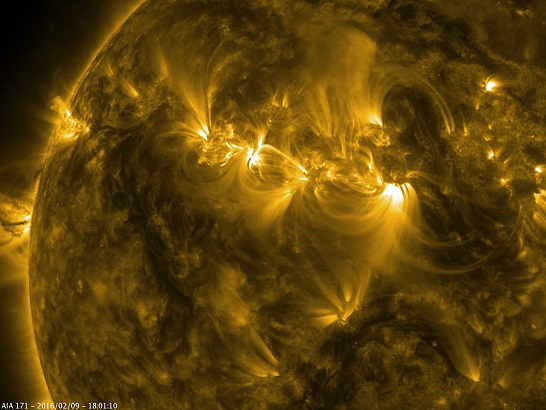
https://www.jpl.nasa.gov/spaceimages/images/largesize/PIA20474_hires.jpg
The sun is a rotating cymatically excited fluid body
Hannes Alfvén, and later Eugene Parker have both studied energy transport mechanisms described as "Magneto-Hydro-Dynamic" or MHD physics, and Alfvén was awarded the Nobel Prize in 1970 for his breaking work in this field to explain the generational problem of solar photosphere/corona measurements: The solar photosphere (sun's surface, pictured above), is at about 5800 Kelvin (K), but the corona is much hotter at about 1 to 3 million K, and parts of the corona can even reach 10 MK (pictured below).
You can find background material online referencing work in this field by both men. Alfvén first proposed that the energy transport mechanism from the solar surface up into the coronasphere is magnetic, not radiation or thermal conduction... Measurements confirmed this prediction and Alfvén won the Nobel Prize. Parker developed this work, and came to recognize that space is filled with ribbons and filaments that are connecting objects magnetically.
Alfvén repeatedly encountered the same problem as Tesla, the same problem that I face, or that anybody faces when they believe their own eyes over some egghead's theoretical calculations using crappy mathematics. Over and over again in the laboratory, in detailed photography, in repeated cymatic experiments... My eyes keep showing me the same things, and I have looked closely at the math tools worshipped by eggheads... They are irrational to the point of causing insanity, they deny their own eyes in favor of beliefs that are irrational at the most fundamental levels, and this is a serious problem with the advancement of science today in my field.
EMHD Physics

http://strangesounds.org/2016/04/solar-corona-picture-total-solar-eclipse-march-2016.html
Electro-Magneto-Hydro-Dynamics
This is an electric current that has properties of a magnetic wave, or, a magnetic wave that has properties of an electric current
A close examination of Tesla's body of work: background research on his patented technology demonstrates that there is also a strong electrical component: electric currents combined with a flowing magnetic field, or a flowing magnetic field that has properties of an electric current. In the lectures and the patents Tesla begins with electric currents in copper wires, and magnetic fields in iron cores. Then he moved to higher frequencies, 3000 to 5000 Hz, and we are looking at electric currents flowing along surface of the ground. If you increase both the frequency some (but not too high), and increase the power levels a lot, we are then talking about currents of energy traveling freely through open space without the use of metal conductors or magnetic substrates, just highly rarefied gasses... This is happening out in open space. The spiral turns of galaxies, their internal capacitance, resonance functions, and magnetic lag are related to physical measurements taken from Tesla's laboratory research equipment.
These flowing fields are physically there, current science can measure some of the effects light years away, you can photograph them under certain conditions, such as the photo above demonstrates. What you are looking at in that solar eclipse photo is a cymatically excited EMHD manifold geometry; a naturally formed, wireless energy, transport mechanism consisting of a complex EMHD network, or manifold. You have brilliant minds struggling with poor math tools, and they do not understand what they are observing very well because they are not familiar with Tesla's work producing desktop scale models. Bad math = bad models; but if you have working models, you can take direct measurements and make repeated observations. Tesla spoke in his 1891 lecture about deep space astronomy prior to his benchtop lecture demonstrations, which were EMHD physics demonstrations performed with resonating electomagnetic coils, because what he was seeing in the laboratory, what he was demonstrating in lecture, directly relates to astrophysics: Tesla was very, very correct. I learned this mathematical process by learning from Tesla's models, lecture examples, and modern cymatic studies and background research, all detailed in the historical record, all outlined here on this site, all easily reproduced. Tesla's Fluid Model is not MHD, it is Electro-Magneto-Hydro-Dynamic, or "EMHD physics", because these magnetic currents have properties very similar to an electric current flowing along a wire or through a conductive substrate.
The structure of the EMHD manifold that surrounds the human head and body, is highly congruent with naturally produced EMHD geometries such as shown in the solar eclipse photo above, or observed around Tesla's high frequency electrical oscillators.
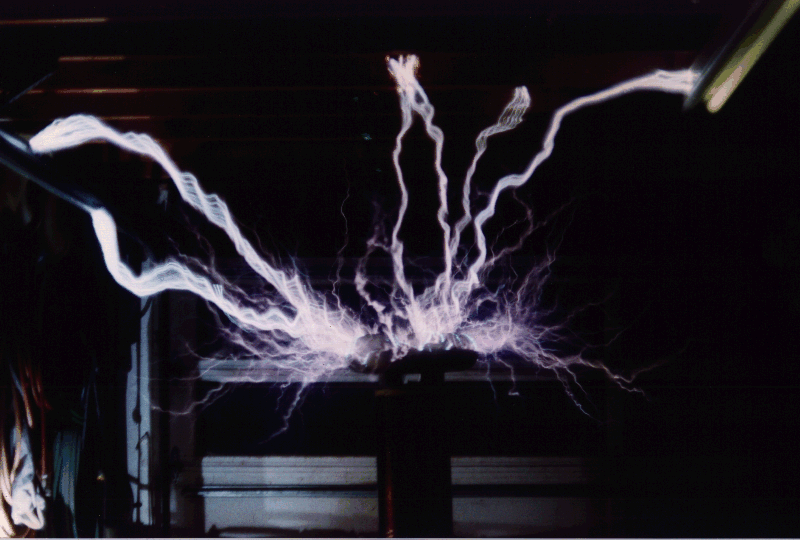
Tesla's Fluid Dynamics
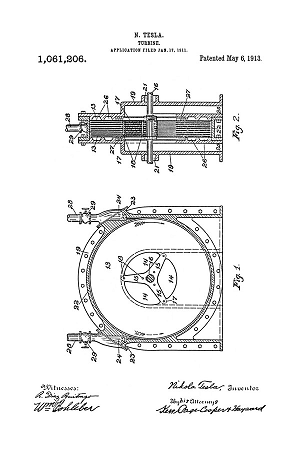
Turbine, Valvular Conduit, Pump, Fountain, Velocity Meters, Aerial Transportation
Tesla Transmitters

Wireless Transmission of Electrical Energy
Tesla's Cymatic Research
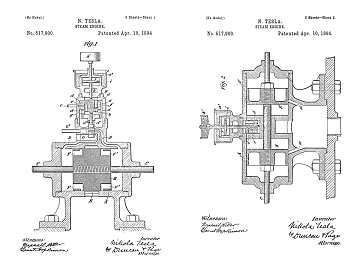
Steam Powered Isochronous Acoustic Oscillators & Generators
Tesla's Electric Circuit Controllers

Precision Switching Technology
Tesla's Electrical Isochronous Oscillators
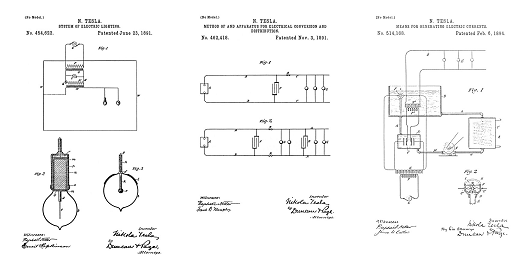
Capacitive Discharge Power Processing
Archive
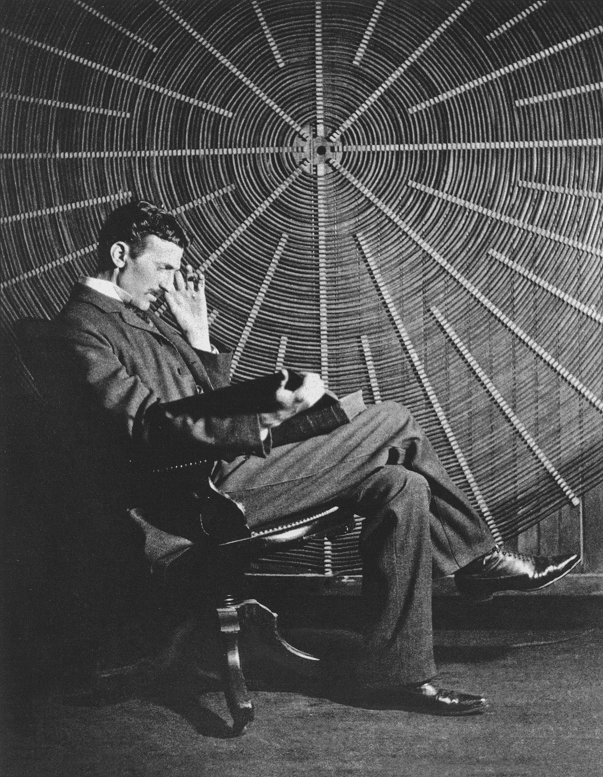
Authenticated Documentation: Patents, Lectures, Articles, with Lab-Tesla commentary
Ark
